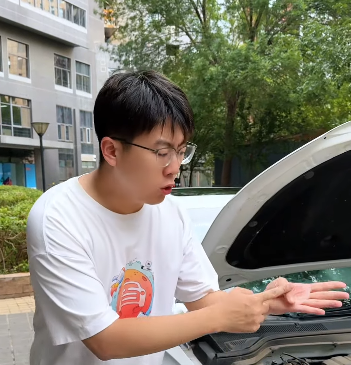
Buying a used car can be a smart financial decision. It often allows you to get a great vehicle at a lower price than buying new. However, the used car market also carries certain risks, especially when dealing with dishonest sellers. Some may try to hide serious mechanical problems, roll back the odometer, or even sell vehicles that have been in major accidents or floods. To protect yourself and make a confident, informed decision, here’s how to avoid being cheated when buying a used car.
1. Set a Budget and Do Your Research
Before you even look at any cars, determine how much you’re willing to spend. This includes not only the cost of the car but also insurance, taxes, registration fees, and any repairs or upgrades you might need. Once you’ve got a budget, research the types of vehicles that fit within it. Use resources like Kelley Blue Book, Edmunds, and Carfax to check fair market prices for different models, years, and conditions.
Check reviews and forums to learn about common issues with the models you’re considering. Some cars have a reputation for reliability, while others are known for costly repairs. Doing this background research helps you narrow your options and spot deals that are too good to be true.
2. Buy from a Reputable Source
One of the best ways to avoid being cheated is to buy from a reputable source. Consider the following:
- Certified Pre-Owned (CPO) Dealers: These vehicles usually go through strict inspections and come with warranties.
- Franchise Dealers: They may offer trade-ins and typically ensure the car is in decent condition.
- Private Sellers: You might get a better price but be extra cautious. Always verify their ownership and the condition of the vehicle.
- Online Platforms: Sites like Autotrader, CarGurus, and Facebook Marketplace can be good, but watch out for scams.
Avoid buying from anyone who pressures you, is evasive about the car’s history, or offers deals that seem suspiciously low.

3. Inspect the Car Thoroughly
Even if the car looks great, never skip a personal inspection. Look for the following signs of potential problems:
- Exterior: Check for mismatched paint, dents, or rust. These may indicate prior accidents.
- Tires: Uneven wear can suggest alignment issues or suspension problems.
- Interior: Examine the seats, dashboard, pedals, and carpet for excessive wear, water damage, or smoke smells.
- Engine Bay: Look for leaks, rust, or signs of poor maintenance.
- Underneath the Car: Check for oil leaks or rust on the frame and exhaust.
If you don’t know what to look for, bring a friend who’s more knowledgeable or consider getting a professional mechanic involved.
4. Check the Vehicle History Report
Always ask for a vehicle history report from a trusted service like Carfax or AutoCheck. These reports can reveal:
- Whether the car has been in any accidents.
- If it has a salvage or rebuilt title.
- How many previous owners it had.
- If the odometer reading is consistent.
- Whether the vehicle was ever stolen or used commercially.
- Past maintenance records (if available).
A seller who refuses to provide a vehicle history report or discourages you from checking it should raise a red flag.
5. Have It Inspected by a Mechanic
No matter how good the car looks or how convincing the seller seems, always get a pre-purchase inspection (PPI) from an independent, trusted mechanic. They’ll check the engine, brakes, suspension, and other critical systems. The inspection might cost a bit, but it could save you from buying a car with hidden issues that would cost thousands to fix later.
Many mechanics can also tell you whether the car has been in a flood or has structural damage — things you might not notice on your own.

6. Take a Long Test Drive
Never buy a car without a test drive. And not just a quick spin around the block — take it on the highway, through residential areas, and over bumps to test how it performs in different conditions.
Listen for any strange noises, vibrations, or steering issues. Check how the brakes respond, how the transmission shifts, and how the car idles. Also test all electronics: windows, lights, radio, air conditioning, and navigation systems.
If the seller hesitates to let you test drive, consider that a big warning sign.
7. Double-Check the VIN
The Vehicle Identification Number (VIN) is like the car’s fingerprint. It should match in several places: dashboard, door sticker, engine bay, and the title. If the VINs don’t match, the car may be stolen or reconstructed from multiple vehicles.
Use the VIN to run a history report and confirm that everything matches the seller’s story.
8. Avoid These Common Scams
Here are a few tricks dishonest sellers use to cheat buyers:
- Odometer Rollback: Some tamper with the odometer to make the car look less used.
- Title Washing: A car with a salvage title might be moved across states to get a clean title.
- Fake Escrow Services: Especially in online sales, scammers may suggest fake payment platforms.
- Flood-Damaged Cars: These cars may be cleaned up and sold, but they’re often unsafe and unreliable.
- Too-Good-To-Be-True Prices: If it seems too cheap for the model and year, be cautious. It could be hiding major problems.

9. Negotiate the Right Way
Once you’re sure the car is in good shape and you’re ready to make an offer, use your research to negotiate a fair price. Be polite but firm. Point out any issues the mechanic found or inconsistencies in the car’s history to justify a lower price.
Don’t let the seller pressure you with lines like “other buyers are coming soon.” Take your time to decide. If you feel rushed or uncomfortable, walk away.
10. Get Everything in Writing
When you decide to buy, ensure the bill of sale clearly states:
- Buyer and seller names and addresses
- Vehicle details (make, model, year, VIN)
- Odometer reading at the time of sale
- Agreed-upon price
- Any warranties or “as-is” statements
Never hand over cash without a receipt. Use secure payment methods like bank transfer or cashier’s check. Also, make sure the seller signs over the title properly, so you can register the car without issues.
Conclusion
Buying a used car doesn’t have to be a stressful or risky experience. With preparation, patience, and a bit of skepticism, you can avoid being cheated and find a reliable vehicle that meets your needs and budget. Always research, inspect, test drive, and verify all documents. If anything feels off, trust your gut — there are always other cars out there. Remember, it’s better to walk away than to drive into a nightmare.


